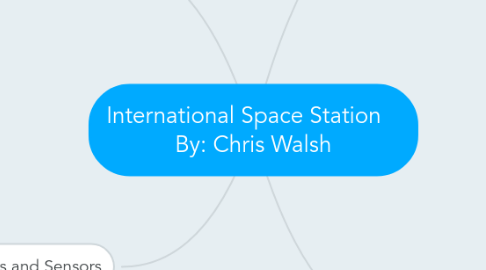International Space Station By: Chris Walsh
by Christopher Walsh

1. The Space Station's Orbit
1.1. The space station's orbit is different from satellites.
1.2. Its orbit is much closer to Earth and can see the planet at different times and angles.
1.3. Many astronauts are able to see and photograph moments that satellites cannot catch on the International Space Station.
1.4. These moments can only be seen when the station is in Low-Earth orbit.
2. Earth Science Instruments and Sensors
2.1. The ISS-RapidScat can monitor ocean winds and help with climate research, weather reports, and hurricane science.
2.2. The Cloud-Aerosol Transport System (CATS) can measure clouds and air born particles.
2.3. SAGE lll can measure gasses in the upper atmosphere like Ozone to help research the recovery of the Ozone layer.
2.4. The Lightning Imaging Sensor can keep track of thunderstorm activity all around the world.
3. Parts of the Space Station
3.1. Modules is the name of the International Space Station's parts. They are parts that make the station function and is also the astronauts sleeping area.
3.2. Nodes (special types of modules) connect the different parts of the stations.
3.3. Labs are used for research.
3.4. Solar arrays are on the ouside of the station and they absorb sunlight and turn it into electricity.
3.5. Robot arms on the outside help to build the station and move the astronauts around.
3.6. Astronauts use airlocks like doors and they are used to get into and out of the space station.
3.7. Docking ports allow other spacecrafts to connect with the station.
4. The Space Stations Purpose
4.1. It assists as a national laboratory for things like human health, biology, and materials research.
4.2. The International Space Station is a technology test-bed and another step forward to more discoveries through space.
4.3. NASA members will learn and improve astronauts safety, health, and production aboard the space station.


